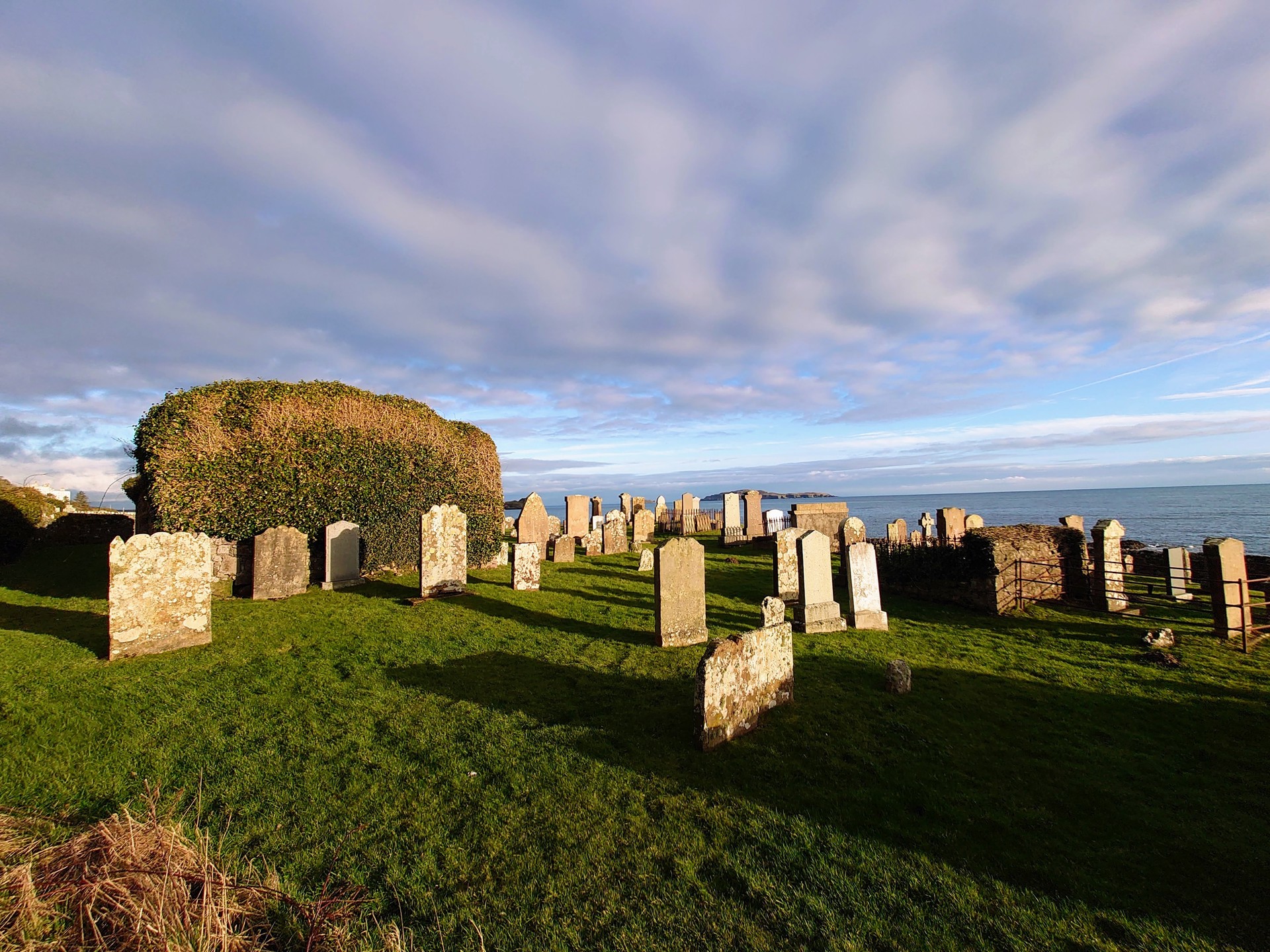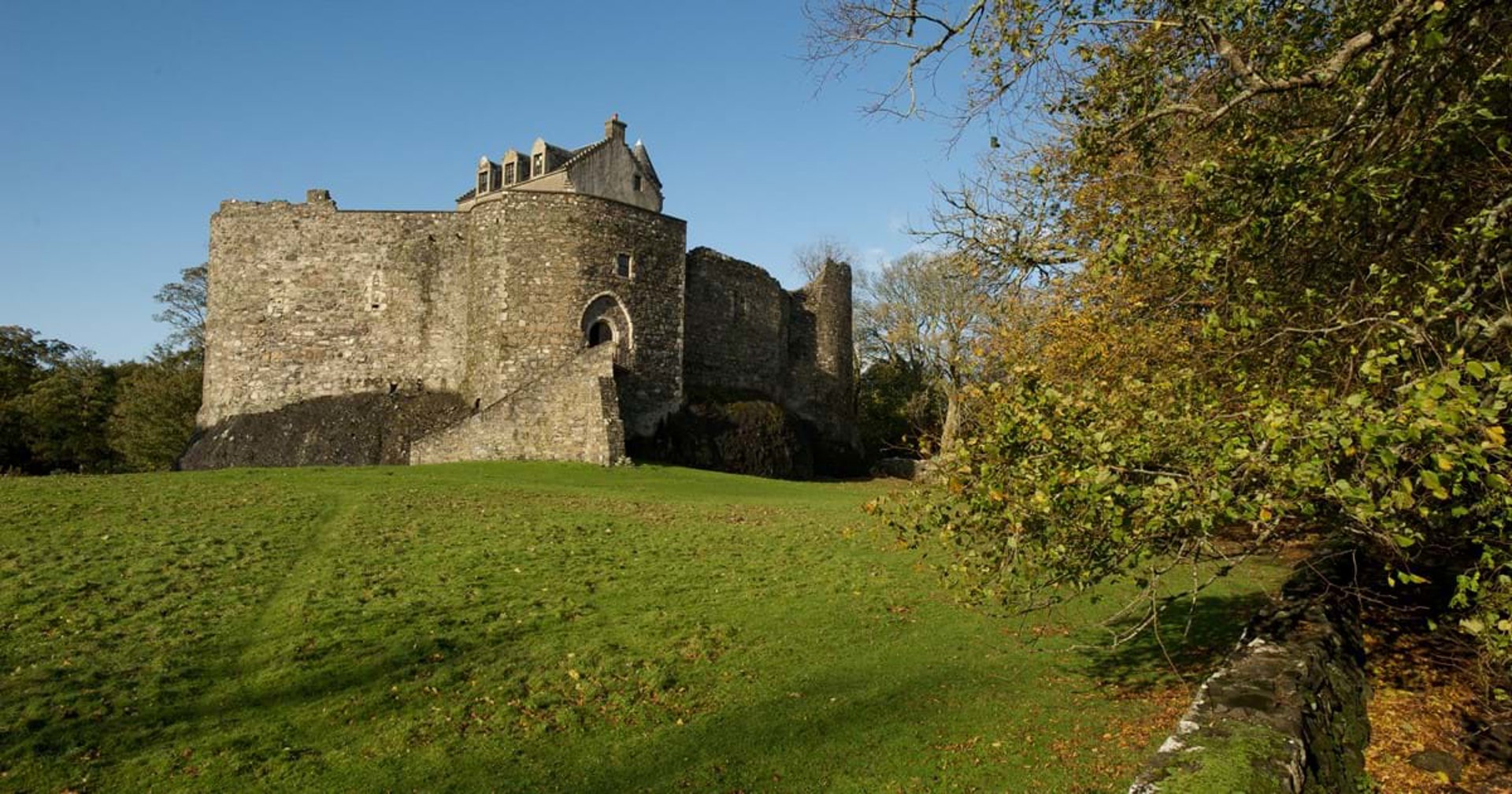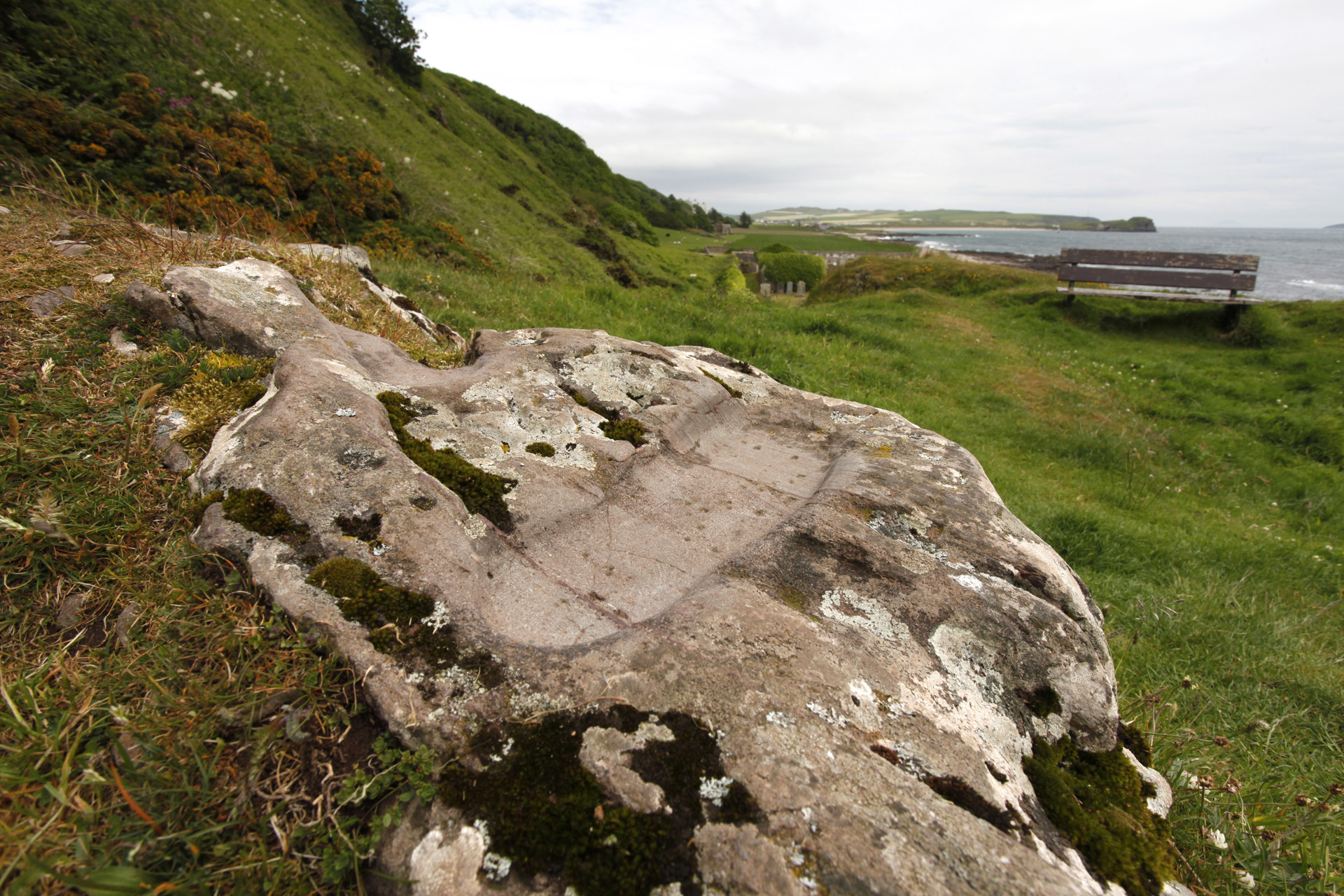Follow in the Kintyre footsteps of St Columba
On the southern end of the Kintyre peninsula in Argyll you can explore a number of fascinating historic sites connected with St Columba, the Irish monk who brought Christianity to Scotland. In AD 563 Columba and 12 followers were exiled from Antrim in Ireland. Many believe that the exiles landed at Keil Point near Southend on the first leg of a journey that would see them head north to Iona and establish a monastic community.
The Four Historic Sites of St Columba
In this beautiful, isolated spot four sites are clustered together: Keil Caves, a holy well said to have been established by St Columba, St Columba's Chapel and St Columba's Footprints. They’re all within easy walking distance of one another.
Keil Caves
Keil Caves are fascinating. Keil derives from the Gaelic, Kilcolmkill, meaning the cell of Columba. St Columba is reputed to have stayed here, but he certainly wasn’t the caves’ only inhabitant. Excavations suggest that people lived here from prehistory right into the age of Dalriada. Roman pottery was found here too, which is rare in Scotland. And there were some more recent residents. The 1881 Census reports that Keil Caves was home to a family of seven! There are a number of caves at Keil, including the Great Cave, the Hermit's Retreat and the Piper's Cave. Legend has it that in the latter you can hear the ghost of a piper playing the pipes.
St Columba's Footprints
You’ll find St Columba's Footprints between Kiel Cave and St Columba's Chapel. Some stone steps take you to the top of a rocky outcrop carrying the footprints. One of them was carved by a local stonemason in 1856, but the other, the nearest on to the sea, is ancient. Whether it is indeed Columba’s footprint is unproven. It’s thought more likely that the print may have been used in the coronation of kings in the ancient kingdom of Dalriada. It could even have been used for the installation of leaders as far back as the southern Picts. There’s another similar footprint at Dunadd in nearby Kilmartin Glen.
St Columba's Well
Slightly further beyond the footprints is St Columba's Well, a rocky bowl carved into the slope where water collects from a spring. Its waters are said to have healing properties. A crude Latin cross has been carved on the rock face that overhangs the basin.
St Columba's Chapel
St Columba's Chapel lies within Keil Cemetery and stands immediately to the east of a rock outcrop and footprints. It’s unlikely that Columba built the chapel. It’s more plausible that the chapel was erected later on a site traditionally associated with stories of Columba. The east end of the chapel is thought to have been built at the end of the 1200s and the west end 1400s or 1500s – well after Columba’s time. St Columba's Chapel is almost totally engulfed by ivy, but you can enter (you’ll need to stoop!) via a partly buried doorway or window. You’ll find some fascinating medieval slabs within the chapel, including two that are believed to have been carved at Saddell Abbey in the 1300s or 1400s.
Discover surrounding historic sites
When you’ve finished exploring these sites, it’s also worth visiting the rock of Dunaverty. Cross Southend Beach and you can clamber up to the site, which was once the location of an important castle and witnessed a horrific massacre in 1647.
There’s a parking area by Keil Cemetery on the minor road that runs south west from the B842 at Southend. From here there are clear sign posts to all the sites. They’re all within a few minute’s walk of each other.
There are other fascinating historic sites in Kintyre and nearby Knapdale with connections to St Columba and other pilgrims. At Saddell near Carradale on the east coast of Kintyre you’ll find the ruins of a Cistercian Abbey. It's from here that medieval pilgrims would set sail for Arran and the Holy Isle. Head further north to Kilberry in Knapdale and you’ll reach St Brendan’s Chapel, which houses an exquisite collection of medieval carvings. Continue onwards to Achahoish where you can visit St Columba’s Cave and other sites connected to the saint. On the East side of the Loch Sween is the church of Kilmory Knap with its carved crosses. On the west lies Tayvallich and Keills Chapel with another set of outstanding carvings. Campbeltown Museum is also worth a visit as it houses various artefacts from the sites.


